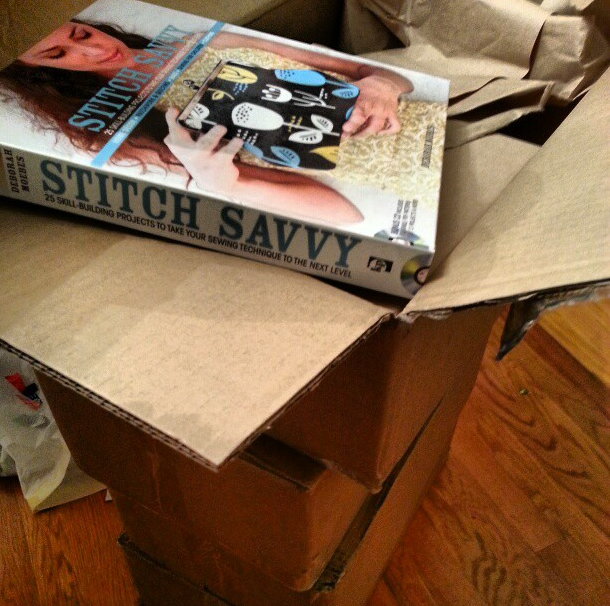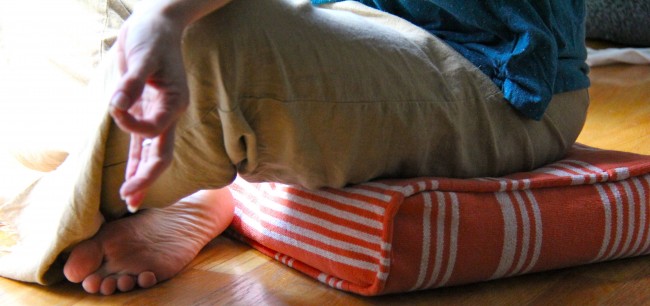
When I planned my prayer and meditation cushions, I knew I wanted to use buckwheat hulls for the filling. I’d used hulls previously for pin cushions, and I loved the weight of them, and the way they create a really stable base. I’d also read about sleeping with a buckwheat hull pillow, and thought the idea would translate well to a floor cushion.
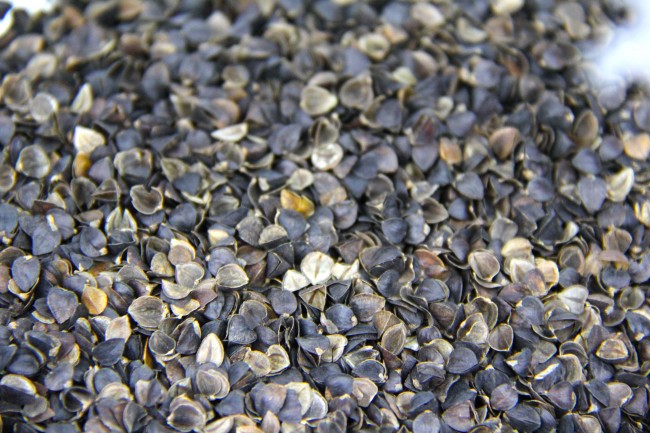
Buckwheat hulls are the hard outer shell that holds the inner seed of a buckwheat grain. The buckwheat is harvested and threshed, and the remaining hulls are cleaned and used for fillings in cushions. Because they don’t retain heat or compress, they can mold to the body and provide support without becoming hot, and most sources say they repel dust mites and are hypoallergenic.
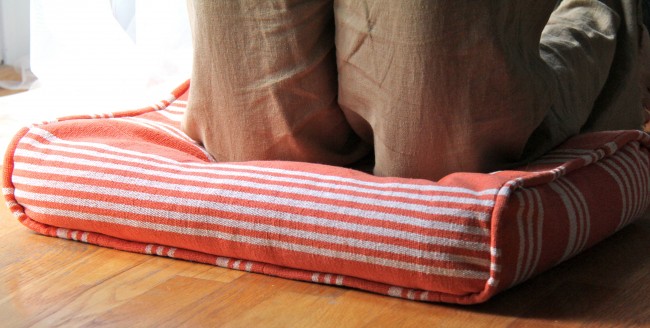
This cushion took a full 5-pound bag of hulls to give it a good shape. If you wanted a firmer pillow, you could use more, but I wanted some space inside the cushion for the hulls to move around so that it would mold better to me as I sat or knelt. The size and weight of the hulls makes for a really pleasant sensation when you use the cushion, and make the pillow heavy enough that it doesn’t fly all over the floor–it really stays put–and they make a lovely soft shushing sound when they move inside the cushion. (You could also use Fiberfill or shredded fabric scraps for the filling, if you don’t want to use buckwheat hulls–adding the herbal element works just the same!)
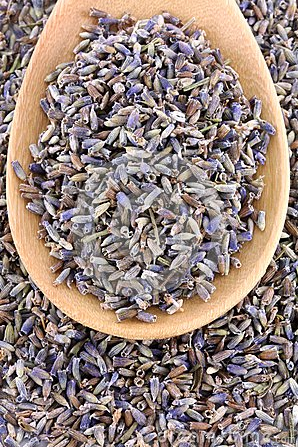
I also wanted to use an herbal scent, something that smelled really lovely but had an added benefit. Lavender flowers have been used for centuries to increase relaxation and to deepen a meditative or prayer state. They’re a classic scent enjoyed by just about everyone, and are affordable and easy to obtain. Because they’re light and airy when dried, a relatively large amount can add little weight but a good amount of volume to your cushion.
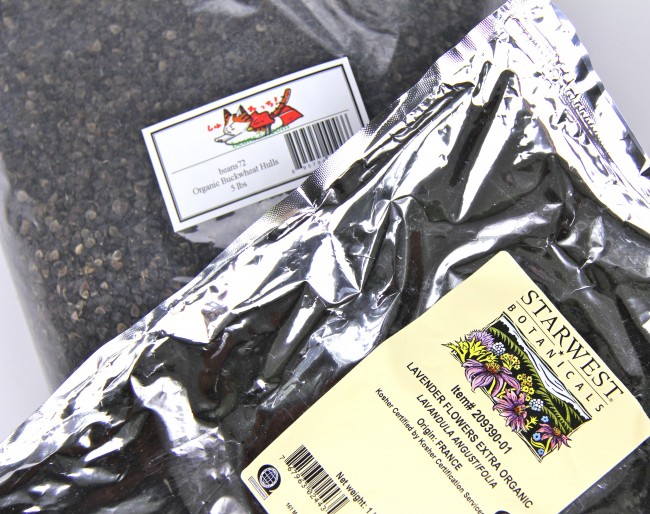
Both the buckwheat hulls and the lavender flowers I ordered (through Amazon) are organic–if that’s less important to you, there are conventionally-grown alternatives at a lower price, but I felt like the price difference didn’t justify the pesticide use that conventionally-produced crops require. There was a good amount–half the bag–of lavender left over, as well, and since it’s food grade, I can feel good about making organic lavender ice cream, flavored spice rubs, soaps, bath salts, all kinds of treats, without worrying about the effects of chemical herbicides and pesticides in them.
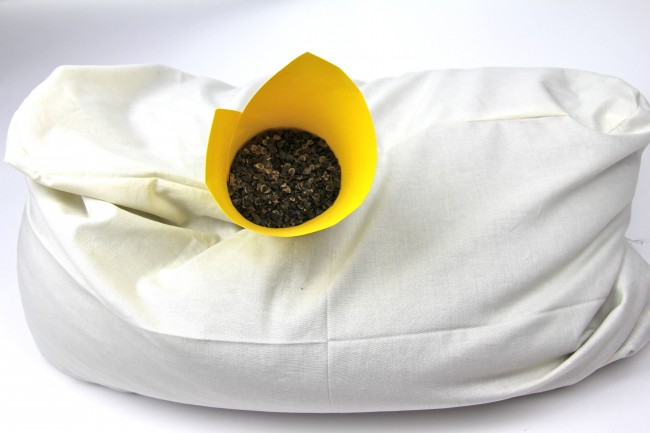
When I filled the cushion insert, I left a 6-inch opening in the side seam, according to the instructions in the pattern. Since the buckwheat hulls are fairly large, a standard funnel wasn’t super useful here–the opening just wasn’t large enough to really allow the hulls to flow quickly and smoothly into the insert, and who wants to spend 45 minutes filling a cushion? Instead, I went to my stand-by: make my own funnel from a piece of card stock. I don’t even tape it together, just roll it up into a cone and plonk the hulls down the tube.
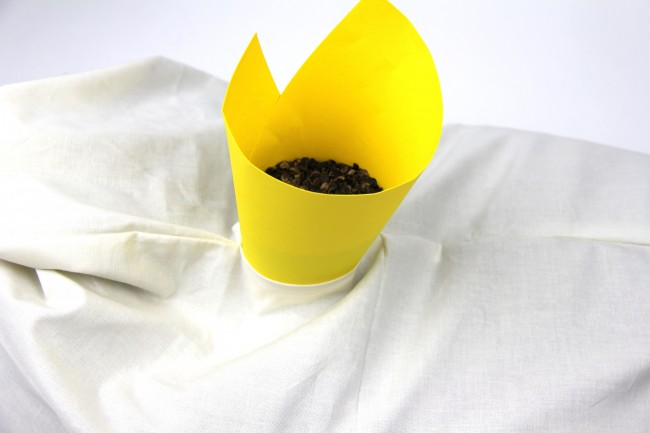
I used a two-cup measure to move the hulls from the bag to the funnel, simply because I wanted to make sure more of them got IN the cushion insert than on the floor. Ahem. For every four full measures of hulls, I added one full measure of lavender flowers, which meant I ended up with around 8-ish cups of flowers total. I think I was worried that the smell would be too strong, so those measurements are ballpark–I was working more on scent than numbers.
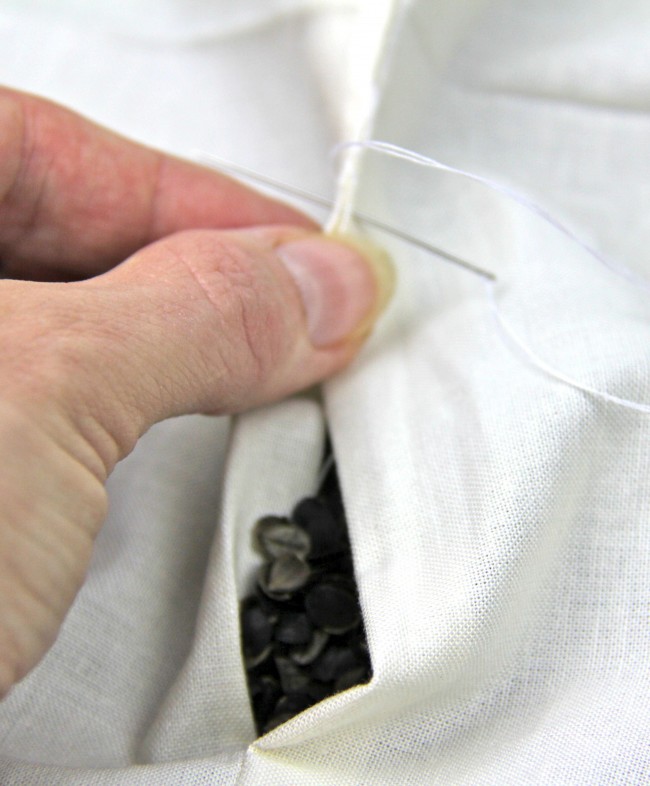
After the cushion was filled, there was still some space, which is what I wanted. It gives room for the hulls to move around inside the insert. I used a hand-sewing needle to whipstitch (hey!) the opening shut and secure the hulls inside. This insert is now “surface washable only” but because it can be removed from the cushion cover, the cover can be hand-washed or laundered and the cushion can be aired out.
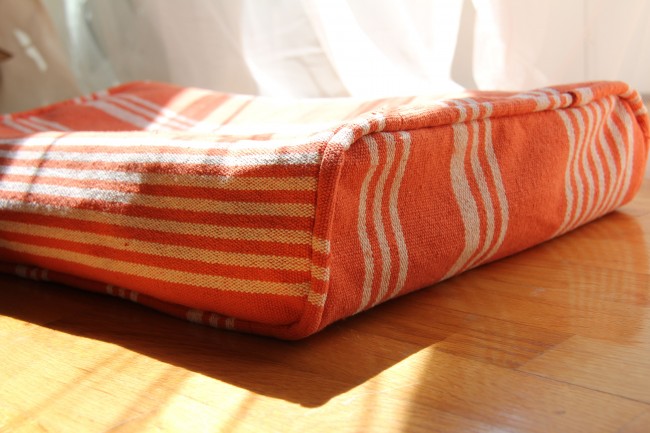
Want to try other herbal scents for your meditation and prayer cushion?
Herbal sites and books ABOUND, and lots of information is easy to find, but try these ten simple recipes to start. Mix each on a 1:4 or 1:5 ratio with your buckwheat hulls, fiberfill or shredded fabric scraps as you fill your cushion insert, alternately layering as you fill.
- dried lavender flowers for relaxation and focus
- cedar, sage and mugwort for meditation and dreaming
- chamomile, hops and rose petals for relaxation and deeper meditation
- eucalyptus and rosemary for clarity and mental alertness
- lemon balm and orange peel to alleviate anxiety and stress
- rose petals to increase warm feelings of caring
- cloves and patchouli for an exotic fragrance and a trip back to the 90s
- lemon verbena and peppermint for a sense of uplift and mental clarity, and vivid meditation
- sage for improved mood and cognitive function
- artemesia and angelica for relaxation and mental calm
Any other suggestions? These recipes could also be used for eye pillows (like in Stitch By Stitch) or hand warmers (with beans instead of buckwheat hulls), so I’d love to hear your suggestions for combinations that work for you!

